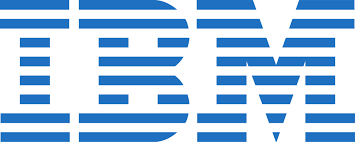Table of Contents
What is Data Migration?
Data migration is the process of moving or copying data from one point to another. The migration could be system to system, device to device, application to application, or format to format. Transferring of data may involve the preparing, transforming, and extracting of data.
By introducing new processes and systems, data migration helps improve business decision-making in an organization, by allowing an organization to grow its data management, storage, and analytics capabilities. Data migration also forms a great part of digital transformation initiatives in large enterprises.
What are Data Migration Tools?
Data migration tools refer to the solutions available to facilitate data migrations. Depending on the preferences and goals of the user, there are three types of data migration tools:
- Cloud-based tools. These tools are used to move data to data warehouses or lakes in the cloud.
- On-premises tools. For static data requirements, on-premises data migration tools move data across databases and servers, excluding the cloud.
- Self-scripted tools. Ideal for small-scale projects, self-scripted data migration tools can be developed in a short period and are often inexpensive. However, they often require in-depth coding expertise.
Also read: Top 8 Data Migration Best Practices and Strategies
Best Data Migration Tools
| Tool | ETL | Metadata Management | Web Services | Multiple Data Sources |
| AWS Database Migration Service | ✅ | ✅ | ✅ | ✅ |
| IBM Informix | ✅ | ✅ | ✅ | ✅ |
| Hevo Data | ✅ | ✅ | ❌ | ✅ |
| Fivetran | ✅ | ✅ | ✅ | ✅ |
| Xplenty | ✅ | ✅ | ✅ | ✅ |
| HubSpot Operations Hub | ❌ | ❌ | ❌ | ✅ |
AWS Database Migration Service

AWS Database Migration Service helps users quickly and securely migrate databases to AWS. To minimize downtime to applications relying on the source database, the database is fully functional during migration. The AWS Database Migration Service can be used to migrate data to and from the most popular and most commonly used open-source and commercial databases. It also supports low latency replication of data with a supported source to a supported target.
Key Differentiators
- AWS DMS Fleet Advisor. AWS DMS Fleet Advisor eases the migration process for users by automating migration planning and helping them migrate database and analytics fleets to the cloud at scale with the least effort.
- Homogeneous database migration. Homogeneous database migration helps users transfer data from the same database platforms such as Oracle to Oracle. The migration is homogeneous as long as the data types, codes, and schema structures are the same.
- Heterogeneous database migration. AWS DMS also allows users to transfer data between databases with different engines such as Oracle to Amazon Aurora.
Con: Migrating large databases may take longer than expected.
Pricing: AWS DMS offers the option of a six-month free plan and allows you to calculate your custom estimate through the AWS Pricing Calculator for the paid plan.
IBM Informix

IBM Informix is an embeddable high-performance database designed for analytics on-premises, in the cloud, or on the edge. It uses a hybrid cloud architecture to not only boost data migration but also reduce software and hardware maintenance costs. Through the use of SQL commands, IBM Informix migrates data from an operating system to another. IBM Informix can easily migrate time series, JSON, SQL, NoSQL, and spatial data.
Key Differentiators
- Real-time analytics. IBM Informix platform helps users generate fast insights by easily powering transactional workloads in a wide range of environments.
- Automated data management. Automated data management simplifies data management for users through deployment features such as “smart triggers” which execute event-driven processing and push notifications without changes to the schema.
- Dynamic Scalable Architecture (DSA). DSA allows Informix to be totally embedded inside an application, edge device, or server to provide users with flexibility, reliability, and affordable maintenance costs.
Con: Informix may come across as a niche product with a closed ecosystem, making it a challenge to find a community of users.
Pricing: IBM Informix offers the Informix Developer Edition and the Innovator-C Edition free of charge. For the Express, Workgroup, Enterprise, and Advanced Enterprise Editions, you should check out the IBM website to contact IBM for more specific pricing information.
Hevo Data

Hevo Data is a no-code bi-directional data pipeline that ensures quicker engineering, analytics, reporting, and decision making by streamlining and automating organization-wide data flows for data teams. As such, using Hevo, organizations can use all their data for higher quality data-driven decision-making. Data teams can clean, enrich, integrate and unify data from many data silos at any time to a destination of choice using Hevo’s Data Pipeline as a Service.
Key Differentiators
- Real-time data transfer. Hevo ensures that users always have analysis-ready data by offering real-time integration.
- Scalable infrastructure. With built-in integrations of over 100 sources and numerous free resources such as HubSpot, Google Analytics, etc., Hevo helps users scale their data infrastructure when need be.
- Completely automated. Since it does not require code, Hevo can not only be very easily set up with just a few clicks but also requires minimal maintenance.
Cons: Pricing is based on events as opposed to rows, through which costs may unpredictably rise if tables get regularly updated.
Pricing: Aside from a free plan, Hevo Data has a Starter Plan, which starts at $149 for 10 million events to $999 for 300 million events. It also has a Business Plan, whose custom pricing is based on a custom number of events. You can check out the vendor’s pricing page for more information.
Fivetran

Fivetran provides a quick and smart way to replicate databases, applications, files, and events into a high-performance cloud warehouse. Fivetran turns all data sources into normalized schemas ready for automatic querying. To allow data teams to focus on generating insights and less on engineering, Fivetran’s connectors deploy in a handful of minutes, automatically adapt to source changes, and require zero maintenance.
Key Differentiators
- Fivetran transformations for dbt core. Fivetran allows users to monitor pipelines, load data, and prompt dbt models to transform data from their Fivetran accounts.
- Fivetran data models. Fivetran offers pre-built models for dbt to help users rapidly convert fresh data into reliable reporting.
- Fully managed connectors. Fivetran’s fully managed connectors ensure that users do not have to worry about pipelines as they are automatically and continuously updated.
Con: Fivetran’s pricing model makes it more costly compared to alternatives.
Pricing: Fivetran offers a 14-day free trial of their Enterprise plan. The paid plans include the Starter plan at $1 per credit, Standard plan at $1.50 per credit, Enterprise plan at $2 per credit, and the Business Critical plan, which requires you to contact Fivetran for a demo and custom pricing information.
Also read: Best Enterprise Cloud Migration Tools & Services 2021
Xplenty

Xplenty, an integrate.io company, is a cloud-based data delivery platform whose goal is to empower teams to derive insights from data such as customer data, marketing campaign data, application usage analytics among others. It is a low-code to no-code ETL solution that gives visualized data pipelines for automated data flows across a broad range of destinations and sources. Xplenty users can read and write data to or from private cloud environments, on-premise locations, and public cloud environments.
Key Differentiators
- Low-code and no-code capability. Xplenty offers both low-code and no-code functionality to provide users with the flexibility to achieve their goals regardless of the approach. For instance, users could also write custom code if they desire to. This also ensures a wider user base as code is not a barrier to usage.
- Rest API to connect to any data source. Xplenty’s Rest API connector offers users the flexibility to speedily connect to any Rest API and extract data, making Xplenty more scalable by enabling users to connect with numerous data sources and platforms.
- Salesforce to Salesforce integrations. Xplenty is one of the few ETL tools to not only pull but also push data to Salesforce.
Con: Lack of advanced customization and features.
Pricing: Since Xplenty’s pricing information is not publicly accessible, you would be required to contact Xplenty for a quote.
HubSpot Operations Hub

HubSpot Operations Hub improves the HubSpot CRM through a complete toolkit that connects, cleans, and automates customer data. Data Sync in HubSpot Operations Hub makes it easy for disparate systems to work together. It ensures that data is synchronized between two or more databases, particularly involving HubSpot software and external sources like Salesforce.
Key Differentiators
- Real-time two-way integration. HubSpot data sync offers users the flexibility of choosing between one-way and two-way integrations between synced solutions to ensure that users’ databases are always in continuous sync.
- Code-free functionality. It is easy to use as users can use data sync without having the ability to write code.
- Sync new and historical data. Data sync ensures users’ databases mirror each other across all their tools as it syncs data that existed in the database pre-sync as well as new data.
- Fully customizable syncing. Data sync offers users a unique level of control and customization by allowing users to create filters and field mappings.
Con: Limited sync-able entities.
Pricing: As it is part of the Operations Hub, you may access it for free. However, to use it with premium features, the Operations Hub Starter plan is billed at $45 a month, the Professional plan at $720 a month, and the Enterprise plan at $2,000 a month. You may get further pricing information by contacting the vendor.
Choosing the Best Data Migration Tools
To select the best data migration tool, you should first understand what kind of tool you require. Would it be best as an on-premises tool or should it be cloud-based? You should also consider factors such as the levels of reliability, performance, scalability, and security you seek, which are defined by your data. The destinations and sources of data should also help you narrow your tool search. Finally, for the tools in consideration, compare the pricing models to determine which is most suitable for you and your data. Where demos and free trials are available, do take full advantage to get a hands-on distinction between tools.
Read next: Best Data Mining Software & Tools 2022



